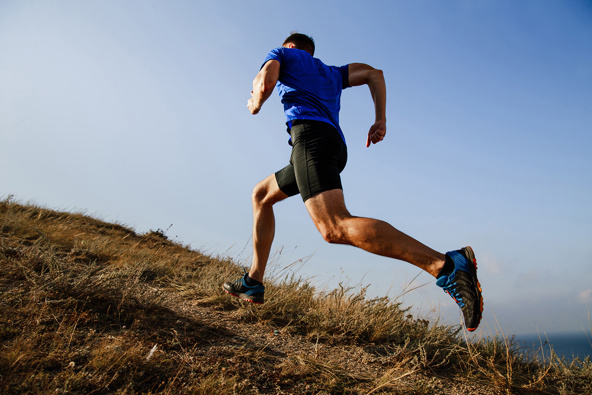Follow
the podcast on

Not all of us were born to be elite runners, and some seem to be better equipped as athletes than others.
But now researchers say one anatomical feature may be key for sprint speed and performance: a large rear.
In research published in the journal Medicine & Science in Sports & Exercise, experts from the University of Loughborough and national governing body British Athletics studied the muscle anatomy of 100-meter track sprinters to understand whether the size of leg muscles differed between average men and first-class athletes.
Using an MRI scanner, researchers measured the size of 23 lower body muscles in 42 men: five who were elite sprinters, 26 who were considered sub-elite and 11 who were healthy but untrained.
The researchers found that top sprinters were generally more muscular, with a specific pattern to their build -- members of the elite group had "far bigger" muscles than those of the untrained men and sub-elite sprinters.
Notably, the muscles extending the hip joint were 32% bigger in the elite athletes than in the sub-elite group.
Researchers found that when looking at individual muscles, the size of an athlete's gluteus maximus was key to his speed.
"The biggest differences between the elite sprinters and the sub-elite sprinters was due to the size of the hip extensor muscle group, and the gluteus maximus muscle in particular -- which is the large muscle which gives your buttock its round shape," Professor Jonathan Folland, an expert in neuromuscular performance at the University of Loughborough, told CNN.
Folland told CNN it was surprising that the hip extensors and the gluteus maximus had such a strong effect on performance.
"Sprint performance depends on many different things: psychology, technique, nutrition. All sorts of factors. We found the gluteus maximus seemed to explain 44% of the variability -- or the size of the gluteus maximus," he explained.
Among the study's elite and sub-elite sprinters, there was some variability in performance, with 100-meter personal bests ranging from 9.91 seconds to 11.25 seconds. Researchers believe that 44% of this variability was explained by the size of the behind, with the gluteus maximus 45% bigger in elite runners.
Gareth Irwin, Professor of Biomechanics at Cardiff Metropolitan University, who was not associated with the research, told CNN that the paper explains that specific muscles contribute to successful sprint performance.
"These researchers have employed magnetic resonance imaging (MRI) to measure the muscle structure and composition of athletes' lower limb and importantly examined a population of a very high standard of performers," Irwin explained in an email.
"Their findings suggest that of all the muscles of the lower legs the gluteus maximus (bottom) is significantly bigger both in size and functionality. As such it makes logical sense that the size of your buttocks is important to your sprinting ability, but size has to be functional muscle and not just 'big,'" he said. "But remember it's not all about the buttocks, other factors must be taken into account including technique, coordination and psychology."
The Loughborough team are now building on the research by studying female sprinters.
text by Amy Woodyatt, CNN
Take your Radio, Podcasts and Music with you









